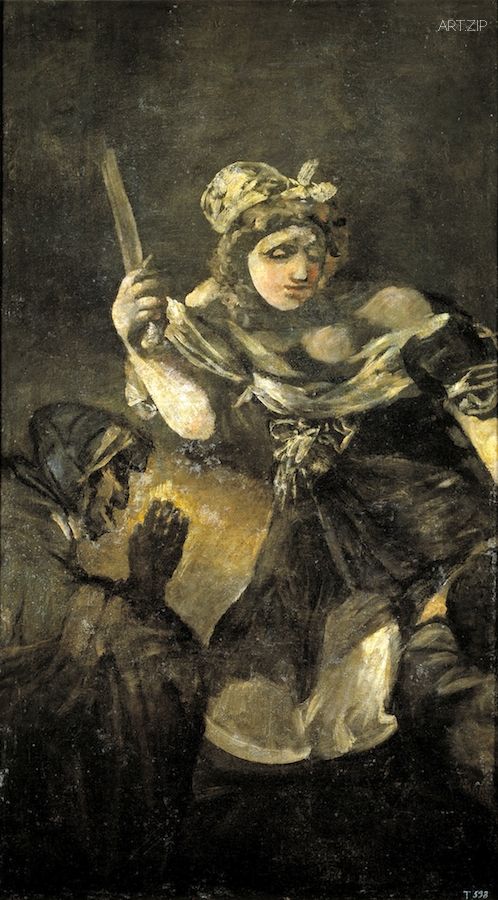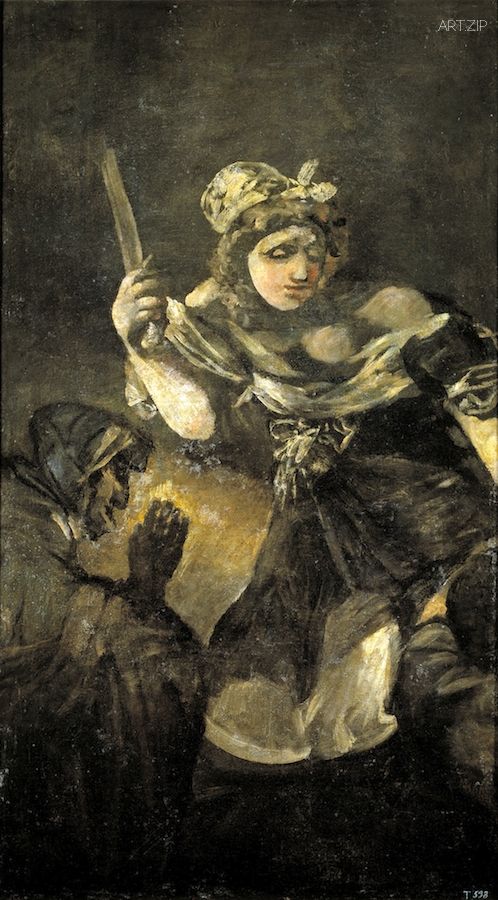
TEXT BY 撰文 x BOWEN LI 李博文
TRANSLATED BY 翻譯 x MICHELLE YU 余小悅
An artist is by definition the one who creates. And, by extension, the one who becomes – however much these two combined resemble the definition of a new god. A shapeshifter shifting shapes. She is not to be satisfied with the role and position given to her, but is to fight for always new territories, to claim not only from others but also from among the artists themselves. This is perhaps also why the idea of a “super artist”(as the counterpart of the super curator) still remains unheard-of – she always already possesses the potential of being super.
An artist’s ambition of becoming the curator after a murder, on the other hand, is nothing novel. “Kill the middle man”, has been for ages the motto par excellence in many business, big or small. (In a sister form of art, cinema, for instance, directors yell out “screw the producer” while the actors go “fuck the director”. Zhang Yimou’s long-term suffering as a result of his producer’s greed is also very recently revealed. The recent and unprecedented commercial success of Chinese firm Alibaba is also based on this: things are cheaper online because things are of low quality, and/or are free from the touch of the middle man.) So if it is no longer a must, no longer a role active, essential, irreplaceable, what did the curator do? One of the biggest mysteries – not in, as it is mysterious for the exteriority of the field, but only – of contemporary art.
On the most basic level, the curator curates, that is, the curator takes care of and for the artist, first and foremost, as parasitic as can be. It is perhaps still urgent (but what does “still urgent” mean, now that in this publication a certain murder is anticipated?) to acknowledge that, there are still places where artists are not forced to speak for themselves – and this necessarily means for the artists to speak also for the artworks, as if the artworks are mute, dumb, incapable of, if not communication, at least expression – where artists consciously or unconsciously follow the doctrine of Matisse, cutting the tongue out, so that the art can successfully, for however brief a moment, become the only language used. That is, so that the artist can become the artist proper, if there ever is such a thing. It is perhaps still urgent to acknowledge that, translatibility in its most radical is always already involved in any speaking-of-the-artwork, with tongue, pen or paintbrush, in which the visual and even the verbal demand justice in, of and for itself. To promise to you a truth in painting. Not every artist is Gerhard Richter, anticipating sincerely an art that is “better” than the artist, beyond the artist, leaving therefore the artist’s own word questionable and inadequate; but not every artist is Luc Tuymans either, speaking with formidable elegance of formidably elegant paintings that are in fact his own, as if he is his own historian, archivist, voluntarily or not. What is at stake here is dissymetricality itself, between roles and between languages.
UK art education today, as has been previously addressed here in this quarterly, leaves the impression that it trains and encourages artist to talk and speak, almost excessively and forcefully. To crack a mouth up, to undo, tear open and make hole in a silence. As if, after J. L. Austin, How To Do Things With Words Regarding Art becomes a core course. Artists or future artists alike reckon it is only appropriate and necessary to talk about and speak of their works, to perhaps compensate for their insecurities or declare to themselves and others the significance of this art that is created anew today. To me, very personally, as a former small time performance artist of some sort, it is nothing less than lamentable, simply because of that it takes place anew, before it is questioned anew. But fortunately, the universalization of this specific situation is taking a very slow pace, and there are still a good number of artists worldwide practicing in a way that reminds of the ecstatic silence of that specific caveman, and all those that follow in the history of art.
Hence curator’s job of speaking for them. Absolutely not, however, as their representative, because the curator does not create; but as their agent. For those who cannot or is unwilling to speak, that is, in short, for those who do not wish to surrender to Logos, she is to speak for them as both the agent of the artist and of the Logos. Which is always a problematic thing, and not even in most cases positively so. Another dissymmetry: Logos and its radical other – the later helplessly clings onto the former. The logic of the parasite is flipped upside down.
And, on the other hand, the interests of the institution. Artists, caught in their own practices practically do not have time or energy to deal with the interests of the institution, be it a museum, a gallery, an exhibition or even a collection that could be both picky and greedy. Even if they do – and this availability or ability is immediately suspicious on all levels – actively, they should be freed from the given limits, for, as the myth has it, the artist works in – and out of, one might even add – freedom. Considering and attempting to link the interests of the artist and that of the institution, as the middle man proper, the curator is the buffer, locus of negotiations, bargains, deals. Before she is territorialized – which is not strictly speaking a goal, not even a necessity – she is first and foremost deterritorialized as the locus of others’ interests, provisional, temporary, but essential, because the expression and projection of desires onto others pertain to, in a minor way, a certain truth of art. In other words, the ugliness is reserved here in the senses of the curator. The curator’s art is ugly by nature, according to the aesthetics of the day.
And the interests of the curator herself. A body territorialized by her own desires proper, playing God. It is ugly enough and well-known enough a fact, I do not think I should go into it in-depth here.
Before the actual but unlikely outbreak of the war between the artists and the curators or even before the actual but no less unlikely replacement of the curator by the artist – unlikely since they are very much mutually dependent – we have been speaking for long now the urgent and important differentiation between and among the two parties. Take names that are somehow esoteric for instance, in passing: the legendary bohemian Jack Bilbo, artist, bodyguard of Al Capone and author of a number of autobiographies, was also a gallerist and produced exhibitions of works by Picasso, Van Gogh, Renoir, Courbet, Klee, among many others. Henry Darger drew and died.
Really briefly, we have shown at least three interests that are at work in the body of a curator. By no means do these interests co-exist in harmony. It is the struggle of the interests that distorts this body, but the political economy of different interests, on the other hand, perhaps is exactly the task of the curator. Finishing: if the question today is, as it is radicalized above, the artist’s murder of the curator before her own becoming-the-curator, I am not attempting to argue that it is ridiculous as it apparently is. I find it most interesting – in all sense of the word – just as interesting as the curator’s murder of the artist. The guest editor of this issue responded, in a meeting, to the question of “how about curator becoming artist?” by stating everybody wants to be the artist because it is hip, hot, awesome – so the curator should not be allowed. My wonder was simply that, do you not realize that in fact curator is the hip, hot, awesome thing today, as your arrogation has it? I am also reminded now of a recent dinner, during which one of the most respected female curators in the world today jokingly called herself and a number of artworld professionals including one of the most esteemed gallerists in China “failed artists”, all trained initially as artists and later became something else.
藝術家首先是從事創作的人。其次,藝術家是在自身中進行改變,進行德勒茲式生成的人。這雙重身份的結合讓藝術家聽起來就像是上帝一般。藝術家永遠在轉變她的形態。她不但不滿足現有的身份,更勇於擴張新的領地,不僅與外人搶奪,也從夥伴們身上攫取。這也許是為甚麼對應於“超級策展人”身份的“超級藝術家”仍然是一個陌生的概念,因為她從來就擁有這種變為“超級藝術家”的潛力。
藝術家自立為“策展人”不算什麼新鮮事。多年來,這種“除掉中間人”的做法在各行各業中也屢見不鮮(舉例來說,在與藝術密切相關的電影行業中,導演嚷著“幹掉製作人”,演員鬧著“幹掉導演”,而中國著名導演張藝謀長期被貪婪的電影製作人欺壓的新聞最近也被大量曝光;另外,近期獲得空前成功的電商巨鰐阿里巴巴也是基於這個原則──網絡購物變得更加廉價因為沒有中間商的掺和。)如此看來,要是中間人這樣的角色並不是必須存在的,也不是不可取代的,甚至不是起著重要作用的話,那麼,策展人到底在做什麼?對於藝術世界外部的人們來說,這可能是有關當代藝術界的最大謎團。
策展人最基本的工作範疇就是照料——照料藝術家的實踐,照料藝術作品。從最表層來看,這似乎是非常寄生性的工作。然而,或許我們仍然有必要指出這個事實:在世界上的許多地區,藝術家仍然不必為自己言說,做出解釋——這當然也意味著,同樣地,這些藝術家也不必假設自己的作品是無言的,被禁止進行表達與交流的,而為這些藝術作品做出解釋——在這些地方,藝術家有意識或無意識地遵循馬蒂斯的教導,切下她們的舌頭,以讓藝術語言成為唯一起作用的語言。只有這樣,藝術家的身份才能夠被確立。換言之,或許我們仍然有必要指出,無論是在舌尖之上或是在筆觸之上,我們關注的重點一直是激進轉譯性的可能——我們究竟是否能夠通過語言對藝術施加正義,如果可以的話,我們究竟要使用何種語言。以向你承諾,繪畫的真相。然而,不是每個人都能成為傑拉德李希特,真誠地期待著自己的作品能夠超越作為一個個體的自己,並真誠地相信藝術家再說什麼都比作品遜色;也不是任何人都能成為呂克圖爾曼,畫作與談話一樣迷人,彷彿他就是研究自己的歷史學家,歸檔者,無論他是否想要這種身份。這種角色之間、話語之間的“不對稱”引人思考。
這本出版物在前幾期的專題裡討論過現今英國藝術教育的問題,而英國藝術教育給人的印象就是要鼓勵並加強藝術家說話和交流的訓練,這幾乎是過分的,強迫性的──敲開藝術家的嘴,讓他們吐出話來,打破沉靜。我們幾乎要想像,在J.L.奧斯汀之後,某種《有關藝術的以言行事(How To Do Things With Words Regarding Art)》一定會在教育機構中大賣。出於不安全感,或出於宣稱作品的新的意義的需要,藝術家和藝術學生們通常把這種面對藝術作品時進行的解釋視為是合適的、必要的。對我個人來說,作為一名短暫從事過表演藝術實踐的人,這種言說的必要性是讓人惋惜的。因為,絕對地新穎的創作在被懷疑前早已一次又一次地發生。幸運的是,英國狀況並沒有以一種驚人的速度在全世界快速地發展開來。世上仍然有相當多的藝術家如幾千年前的那位特殊的山洞住民一般,在進行藝術創作的同時保持緘默。
無論如何,正正因為這個狀況的出現,才有了策展人為藝術家進行言說、解釋這一回事。然而,策展人絕對不是藝術家的“代表”,因為策展人與藝術家是異質的——策展人無論如何不進行任何形式的創作。策展人不是藝術家的“代表”,而是中介,為那些不能夠或不願意言說的藝術家——即那些不願意向邏各斯投降的藝術家——發言。因此,策展人同時是藝術家的中介,也是邏各斯的中介,協調了藝術家-理性二元對立關係的兩端。這種做法總是有待考量的,甚至大多情況下都不是積極的。這裡涉及的是另一種“不對稱”:邏各斯理性與激進地異質的他者──藝術家,後者無助又無奈地依附於前者。寄生關係中的寄生主與寄生物發生了顛倒。
其次,策展人照料機構及制度的利益。藝術家通常都忙於自己的藝術實踐,基本無暇顧及合作機構的利益——無論這機構是博物館、畫廊、展覽又或是某個收藏。它們也很可能是既挑剔又貪婪的。就算藝術家有這樣的時間和精力──這樣的閒暇和能力不禁讓人懷疑她們的水平──他們也應該不受任何限制地去創作,就如同關於藝術家的神話所說的一樣:藝術家在自由中創作,創作出自由。而策展人,為了平衡藝術家和機構雙方的利益,他正是在雙方談判、交涉、交易中起緩衝作用的核心人物,一個真正的中間人。在她規劃出自身的欲望領地之前——然而這並不一定是工作或身份的目標——策展人首先就作為他人欲望領地的其中一個場址被非領地化了,因為從某種意義來說,將欲望投射在他者身上,又或者在他者身上表達欲望,與藝術的某種真相有關。換句話說,“醜惡”被放置於策展人身體中。按照當下的美學來說,策展人的藝術,本質上就是醜陋的。
再次,策展人需要照料自己的利益。一個被自身欲望所領地化的人扮演著上帝的角色。如此醜陋又人儘皆知的事實,我想也不必再作深入探討。在藝術家與策展人的戰爭面前,在藝術家取代策展人這一現實發生之前,我們已經討論了兩個陣營之間緊迫而重要的“職業責任劃分”。一些比較簡短的例子:放蕩不羈的傳奇人物傑克·比爾博(Jack Bilbo),既是藝術家,艾爾·卡朋(Al Capone)的保鏢,自傳作家,同時又是畫廊主,曾舉辦畢加索、梵高、雷諾、庫貝爾、克雷等人的展覽;而亨利·達格(Henry Darger)則畫完畫就死了。
在這個狹小的空間裡,我們羅列了至少三種策展人所涉及到的利益,這些利益在很多情況下是不能和諧共存的。正是這些利益爭奪讓策展人分裂或扭曲,但是另一方面,處理不同利益關係的政治經濟行為也許正正是策展人的真正任務。最後,如果問題是,在今天,就如以上所說的那麼極端,藝術家為了自立為策展人而“除掉策展人”,我沒有嘗試在這篇文章中聲稱這是荒謬的——因為它顯然如此。對我來說,更有趣的是,這期的客座編輯曾這樣回應關於“策展人變成藝術家”的合理性及可能性問題:她說,大家都想成為藝術家,因為藝術家很“酷炫”,而策展人並不是。我的疑問是,您是否意識到策展人在今天也是那麼地“酷炫”?我也想起,在最近的一次私人晚宴上,當今國際藝術界其中一位最受尊重的女性策展人半開玩笑地聲稱,自己和一堆藝術專業人士(包括中國其中一位最敬重的畫廊主)都是“失敗的藝術家”,並正正因為她們都是“失敗的藝術家”,她們才跑去做別的工作了。
Other Views
“It was commented that artists can do without curators and writers etc, but not vice versa. Of course power structures are problematic but it is ridiculous to even speak of art today without recognising that visibility structures produce the work we examine . Art as we know it is produced by a complex web of actors and the further we go towards recognising and utilising this the better.”—Dr Becky Shaw, artist, research tutor at Sheffield Hallam University.
“以前的觀點是,藝術家沒有策展人和寫手也可以,但反之就不行。權力結構當然是有問題的,但是如果到現在還不能意識到可見性結構確實構建了我們正在討論的作品,甚至是藝術,那才是荒唐的。我們所知道的藝術是一張複雜大網上各個演員各司其職的產品,我們對此認識越深入,利用得越好,對藝術便越好。”--貝奇·肖博士,藝術家,謝菲爾德哈勒姆大學研究生導師。


